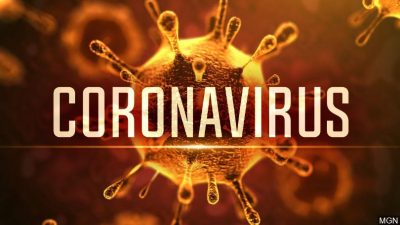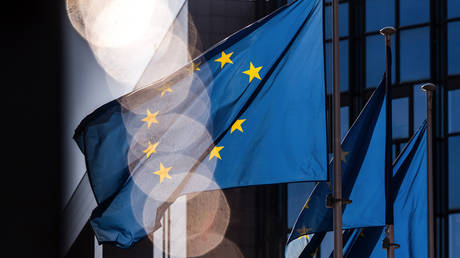In the course of the last two weeks, the World Health Organization (WHO) had already pointed to a possible Global Public Health crisis in relation to China’s novel coronavirus (2019-nCoV) categorized as a viral pneumonia. The virus outbreak is centred in the city of Wuhan, a city in Eastern China with a population in excess of 11 million.
On 22 January, the members of the WHO Emergency Committee “expressed divergent views on whether this event constitutes a PHEIC or not”.
On January 30, The Committee reconvened and declared the coronavirus epidemic as a Public Health Emergency of International Concern (PHEIC).
(for details on the Committee meetings scroll down to ANNEX)
What justified this far-reaching decision by the WHO director General:
About 9,600 corona virus (pneumonia) confirmed cases and 213 deaths recorded in China on Jan 30, which has a population of almost 1.4 billion people.
No deaths have been reported out of Mainland China.
And approximately 100 cases of infection have been recorded outside China. Moreover, (based on the above data), the 2019 nCoV has a low mortality rate (2.1%) compared to the Seasonal flu.

CBS Screen scan, Jan 30, 2020
The above CBS quotation is misleading.
Based on January 30 data, what should be emphasized is the following
- No deaths occurred outside China,
- More than 9500 recorded cases in China,
- Approximately 100 cases recorded outside China,
In contrast, in the US, according to the Centers of Disease Control estimates that so far for the 2019-20 season, at least 15 million flu virus illnesses, 140,000 hospitalizations and 8,200 deaths in the U.S, which has population of 330 million, about a quarter that of China. And there was virtually no coverage or concern regarding the Seasonal Flu, which in 2017 resulted globally in 650,000 deaths.
The media has gone into hight gear, the Wuhan coronavirus is portrayed as a global threat. An atmosphere of fear and intimidation prevails.
Can we trust the WHO?
Flashback to 2009. The N1H1 swine flu pandemic
Based on incomplete and scanty data, the WHO predicted (with authority) in relation to the H1N1 swine flu virus that: “as many as 2 billion people could become infected over the next two years — nearly one-third of the world population.” (World Health Organization as reported by the Western media, July 2009). It turned out to be a multibillion bonanza for Big Pharma supported by the WHO’s Director-General Margaret Chan.
In June 2009, Margaret Chan made the following statement:
“On the basis of … expert assessments of the evidence, the scientific criteria for an influenza pandemic have been met. I have therefore decided to raise the level of influenza pandemic alert from Phase 5 to Phase 6. The world is now at the start of the 2009 influenza pandemic. … Margaret Chan, Director-General, World Health Organization (WHO), Press Briefing 11 June 2009)
What “expert assessments”?
In a subsequent statement she confirmed that:
“Vaccine makers could produce 4.9 billion pandemic flu shots per year in the best-case scenario”,Margaret Chan, Director-General, World Health Organization (WHO), quoted by Reuters, 21 July 2009)
A financial windfall for Big Pharma Vaccine Producers including GlaxoSmithKline, Novartis, Merck & Co., Sanofi, Pfizer. et al.
Fake News, Fake Statistics, Lies at the Highest Levels of Government
The media went immediately into high gear (without a shred of evidence). Fear and Uncertainty. Public opinion was deliberately misled
“Swine flu could strike up to 40 percent of Americans over the next two years and as many as several hundred thousand could die if a vaccine campaign and other measures aren’t successful.” (Official Statement of Obama Administration, Associated Press, 24 July 2009).
“The U.S. expects to have 160 million doses of swine flu vaccine available sometime in October”, (Associated Press, 23 July 2009)
But the pandemic never happened.
There was no pandemic affecting 2 billion people…
Millions of doses of swine flu vaccine had been ordered by national governments from Big Pharma. Millions of vaccine doses were subsequently destroyed: a financial bonanza for Big Pharma, an expenditure crisis for national governments.
There was no investigation into who was behind this multibillion fraud.
Several critics said that the H1N1 Pandemic was “Fake”
The Parliamentary Assembly of the Council of Europe (PACE), a human rights watchdog, is publicly investigating the WHO’s motives in declaring a pandemic. Indeed, the chairman of its influential health committee, epidemiologist Wolfgang Wodarg, has declared that the “false pandemic” is “one of the greatest medicine scandals of the century.” (Forbes, February 10, 2010)
For more details on the 2009 H1NI pandemic see
Remember the 2009 H1N1 Swine Flu Pandemic: Manipulating the Data to Justify a Worldwide Public Health Emergency
By Prof Michel Chossudovsky, January 25, 2020
Important lessons to be learnt from the 2009 H1N1 Pandemic:
Can we trust the Western media.
Can we trust the World Health Organization (WHO) and Western governments including the US Centers for Disease Control and Prevention (CDC), all of which are serving the interests of Big Pharma (at tax payers’ expense).
What are the stakes, why the media propaganda. A financial windfall for Big Pharma
ANNEX
This annex provides details on January 3oth WHO Decision to identify the Wuhan coronavirus epidemic as a Public Health Emergency of International Concern (PHEIC).
The second meeting of the Emergency Committee convened by the WHO Director-General took place on Thursday, 30 January 2020, from 13:30 to 18:35 Geneva time (CEST).
The Committee’s role was “to give advice to the Director-General, who makes the final decision on the determination of a Public Health Emergency of International Concern (PHEIC)”.
That decision was taken by Secretary General after a three hour meeting.
Below are relevant excerpts
Members and advisors of the Emergency Committee were convened by teleconference
The Director-General welcomed the Committee and thanked them for their support. He turned the meeting over to the Chair, Professor Didier Houssin.
….
Representatives of the Ministry of Health of the People’s Republic of China reported on the current situation and the public health measures being taken. There are now 7711 confirmed and 12167 suspected cases throughout the country. Of the confirmed cases, 1370 are severe and 170 people have died. 124 people have recovered and been discharged from hospital.
The WHO Secretariat provided an overview of the situation in other countries. There are now 83 cases in 18 countries. Of these, only 7 had no history of travel in China. There has been human-to-human transmission in 3 countries outside China. One of these cases is severe and there have been no deaths.
At its first meeting, the Committee expressed divergent views on whether this event constitutes a PHEIC or not. At that time, the advice was that the event did not constitute a PHEIC, but the Committee members agreed on the urgency of the situation and suggested that the Committee should continue its meeting on the next day, when it reached the same conclusion.
This second meeting takes place in view of significant increases in numbers of cases and additional countries reporting confirmed cases.
…
The Committee welcomed the leadership and political commitment of the very highest levels of Chinese government, their commitment to transparency, and the efforts made to investigate and contain the current outbreak. China quickly identified the virus and shared its sequence, so that other countries could diagnose it quickly and protect themselves, which has resulted in the rapid development of diagnostic tools.
The very strong measures the country has taken include daily contact with WHO and comprehensive multi-sectoral approaches to prevent further spread. It has also taken public health measures in other cities and provinces; is conducting studies on the severity and transmissibility of the virus, and sharing data and biological material. The country has also agreed to work with other countries who need their support. The measures China has taken are good not only for that country but also for the rest of the world.
The Committee welcomed a forthcoming WHO multidisciplinary technical mission to China, ..
The Committee wished to re-emphasize the importance of studying the possible source, to rule out hidden transmission and to inform risk management measures
The Committee also emphasized the need for enhanced surveillance in regions outside Hubei, including pathogen genomic sequencing, to understand whether local cycles of transmission are occurring.
WHO should continue to use its networks of technical experts to assess how best this outbreak can be contained globally.
WHO should provide intensified support for preparation and response, especially in vulnerable countries and regions.
Measures to ensure rapid development and access to potential vaccines, diagnostics, antiviral medicines and other therapeutics for low- and middle-income countries should be developed.
WHO should continue to provide all necessary technical and operational support to respond to this outbreak, including with its extensive networks of partners and collaborating institutions, to implement a comprehensive risk communication strategy, and to allow for the advancement of research and scientific developments in relation to this novel coronavirus.
WHO should continue to explore the advisability of creating an intermediate level of alert between the binary possibilities of PHEIC or no PHEIC, in a way that does not require reopening negotiations on the text of the IHR (2005).
WHO should timely review the situation with transparency and update its evidence-based recommendations.
The Committee does not recommend any travel or trade restriction based on the current information available.
The Director-General declared that the outbreak of 2019-nCoV constitutes a PHEIC and accepted the Committee’s advice and issued this advice as Temporary Recommendations under the IHR.
…
The Emergency Committee will be reconvened within three months or earlier, at the discretion of the Director-General.
The Director-General thanked the Committee for its work.





